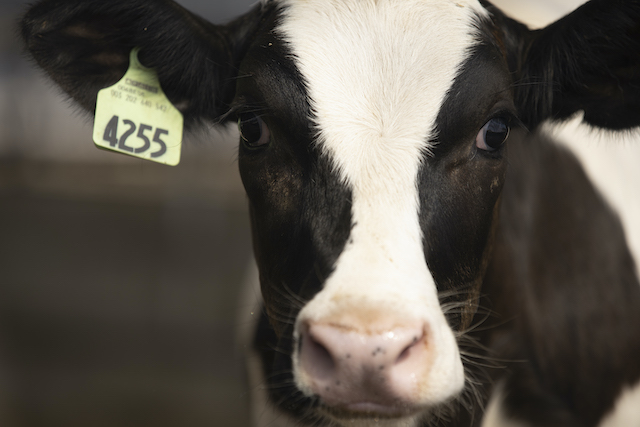
Bovine respiratory disease (BRD) is known as a “disease complex” because it usually stems from multiple factors. A variety of pathogens, both bacterial and viral, can be involved in the development of full-blown disease.
Bovine respiratory syncytial virus (BRSV) is one pathogen that can open the door to other infectious agents and cause respiratory disease. BRSV is known to be very fast-acting and aggressive in both calves and cows. Because the virus itself is not treatable, the question quickly becomes “What can we do to prevent this virus and ultimately prevent the onset of BRD?”
Although we may not be able to eradicate BRSV, there are steps you can take to safeguard your herd from the virus.
No. 1: Colostrum is key
The first and one of the most important kinds of protection we can provide calves is quality colostrum. Newborn calves are born with a naive immune system and rely on high-quality colostrum to provide immunity against BRSV and other infectious agents.
Research has shown that up to 60% of maternal colostrum fed to newborn dairy calves may be inadequate.1 To make certain your calves are getting the quality colostrum they need, focus on three things:
• Start with your dry cows. Provide a comfortable, stress-free environment with proper nutrition. This puts them in the best possible position to give birth to a healthy calf and produce quality colostrum.
• Killed vaccines, safely administered at the beginning of the dry cow period, are another way to keep the dam healthy and enhance antibody levels found in colostrum.2 Cows vaccinated during the dry period are also more likely to enter the next lactation with a robust immune system to fight off infectious-disease threats.
• It is recommended calves receive 10% to 12% of their body weight in colostrum within one to two hours of birth.3
No. 2: Keep calves clean
We also want to ensure newborn calves are kept in a stress-free, clean environment with good ventilation. An ample supply of dry bedding will promote calf comfort and decrease the risk of disease contraction, while proper ventilation will keep calves from inhaling dust and harmful disease-causing pathogens.
If possible, keep calves from spreading respiratory disease by preventing nose-to-nose contact. Reduce the risk by refraining from overcrowding and ensuring calves have enough space to eat. If you are housing two or three calves per pen, it’s still important to prevent nose-to-nose contact between pens.
A calf’s immune system can become compromised when exposed to dramatic weather fluctuations. Although the weather is a factor out of our control, your facilities should have the capacity to keep calves protected from the elements and temperature changes.
No. 3: Vaccinate for BRSV
As the passive immunity from colostrum wanes, vaccination is required to jumpstart acquired immunity. I encourage all producers to incorporate BRSV protection into their vaccination program.
Calves can be vaccinated as early as 3 days of age with intranasal vaccines, and again at 30 days of age with injectable modified-live virus (MLV) vaccines. Antibodies absorbed from colostrum can interfere with the development of immunity from MLV vaccines for several months after birth, so it’s also important to administer an MLV vaccine proven to develop immunity in calves even in the presence of colostral antibodies.
Despite all the things we do to keep calves healthy, we are still going to see BRSV break through. You can do your part to limit the incidence and severity of the disease by working with a veterinarian to fine-tune your prevention plan.
References:
1 Morrill KM, Conrad E, Lago A, et al. Nationwide evaluation of quality and composition of colostrum on dairy farms in the United States. J Dairy Sci 2012;95(7):3997–4005.
2 Smith B, Rieger R, Dickens C, et al. Anti-bovine herpesvirus and anti-bovine viral diarrhea virus antibody responses in pregnant Holstein dairy cattle following administration of a multivalent killed virus vaccine. Am J Vet Res 2015;76(10):913–20.
3 Godden SM, Lombard JE, Woolums AR. Colostrum management for dairy calves. Vet Clin North Am: Food Anim Pract 2019;35(3):535–556.
©2022 Boehringer Ingelheim Animal Health USA Inc., Duluth, GA. All Rights Reserved. US-BOV-0029-2022-A
